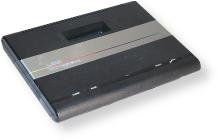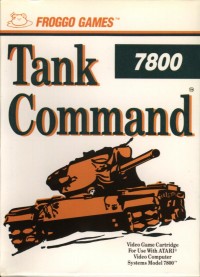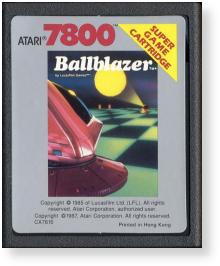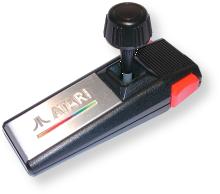Summary
 Atari 7800 Pro System The Atari 7800 was announced on May 21st, 1984, and was planned to retail at $ 140. In the eyes of Atari management, the Atari 7800 would be a rejoinder to form after the lackluster performance of the Atari 5200, as the Atari 7800 would address about all of the shortcomings of the Atari 5200. however due to serial of unfortunate events and ill-conceived clientele decisions the system wouldn ’ thyroxine launch until about two years after its announcement. By this time Nintendo and Sega were dominating a newly rejuvenated home console table market in the United States, but Atari calm saw the opportunity to re-introduce the Atari diagnose into american homes. Yet the Atari 7800 would mark a turning sharpen for Atari as a comfort manufacturer as the cabinet ’ s struggle to regain public popularity marked the eventual crack up of the Atari brand list and party as a unharmed .
Atari 7800 Pro System The Atari 7800 was announced on May 21st, 1984, and was planned to retail at $ 140. In the eyes of Atari management, the Atari 7800 would be a rejoinder to form after the lackluster performance of the Atari 5200, as the Atari 7800 would address about all of the shortcomings of the Atari 5200. however due to serial of unfortunate events and ill-conceived clientele decisions the system wouldn ’ thyroxine launch until about two years after its announcement. By this time Nintendo and Sega were dominating a newly rejuvenated home console table market in the United States, but Atari calm saw the opportunity to re-introduce the Atari diagnose into american homes. Yet the Atari 7800 would mark a turning sharpen for Atari as a comfort manufacturer as the cabinet ’ s struggle to regain public popularity marked the eventual crack up of the Atari brand list and party as a unharmed .
Backstory
In July of 1984, the family video game and family calculator divisions of Atari were purchased by the now ill-famed Jack Tramiel, who then formed Atari Corporation. Although the Atari 7800 was quick to go at this point, licensing negotiations had to begin again because the Tramiels did not agree with existing licensing arrangements, as a consequence the release of the 7800 was delayed. It was around this clock time that the video recording game market crashed, and retailers cut orders and shipments for television games across the circuit board. As a solution, by the end of 1984 the diligence was left with entirely Atari, Coleco ( ColecoVision ), and Mattel ( Intellivision ) all of which decided to turn out newfangled product for their old systems alternatively of developing new consoles, as such no new consoles were on the horizon for the United States. however Atari after spending the survive two years working out the paperwork for the 7800s, by 1986 the 7800 was cook for turn . One of the few third party games for the 7800 however, on October 18, 1985, everything changed. While Atari was preparing to launch the 7800, a japanese caller called Nintendo decided to bring their successful Famicom console table over to the United States as the Nintendo Entertainment System. Despite the fact that the American home comfort market was reeling from the video recording bet on crash of 1983, Nintendo even saw potential consumers. They were mighty ; by the end of 1986 the Nintendo Entertainment System was starting to become a reach with american consumers. With this in thinker, Tramiel and Atari continued with the handout of the 7800, in hopes of reaping in the rewards of a newly awakened family console market.
One of the few third party games for the 7800 however, on October 18, 1985, everything changed. While Atari was preparing to launch the 7800, a japanese caller called Nintendo decided to bring their successful Famicom console table over to the United States as the Nintendo Entertainment System. Despite the fact that the American home comfort market was reeling from the video recording bet on crash of 1983, Nintendo even saw potential consumers. They were mighty ; by the end of 1986 the Nintendo Entertainment System was starting to become a reach with american consumers. With this in thinker, Tramiel and Atari continued with the handout of the 7800, in hopes of reaping in the rewards of a newly awakened family console market.
Reading: Atari 7800 (Platform)
At launch the 7800 had eight titles available. The system was besides backwards compatible with 2600 games without an extra adapter, a feature that the former 5200 console lacked. The public was excited, and the 7800 was poised to take over the bet on world, but unfortunately it did n’t quite happen that way .
Not exactly what we would call a “killer-app” alternatively Tramiel and the rest of Atari management would make assorted business mistakes with the exhaust of the system. The first of which was the fact that Atari had failed to promote and captivate developers to adopt the arrangement and develop games for the 7800. alternatively Atari would concentrate on advertising the complete backwards compatibility the 7800 had with the 2600 games rather of the 7800 ‘s own library of games. only 10 games were developed and released by third party companies for the 7800 during its life, 6 from Absolute Entertainment ; 2 from Activision ; and 2 from Froggo. This mean that the 7800 would have to rely on support from within Atari in club to supply games for the system. however, this was not enough to compete with the NES ‘s or even the Sega Master System ’ s quickly expanding libraries. besides, the launching for the system itself was ill planned. Of the promise thirteen launch titles planned in 1984, only eight were actually available at the time of the system ‘s launch, with four being released late and two ( Rescue on Fractalus ! and Track & Field ) not being released at all. not only that, but the 7800 was ill distributed amongst retailers making the arrangement hard to find during its launch. As a consequence, the 7800 was never able to recover from its rocky plunge, and due to ill think occupation decisions and a highly competitive console table market, failed to reach the market capitalization that Atari had hoped the system would obtain .
US Cumulative Sales
1986 : 286,417 1987 : 1,599,978 ( +1,313,561 ) 1988 : 3,023,955 ( +1,423,977 ) 1989 : 3,679,308 ( +655,353 ) 1990 : 3,772,751 ( +93,443 )
Design
 Atari Pro-Line Controller At the time of its exhaust, the 7800 was initially billed as a graphic powerhouse. The new custom CPU and MARIA graphics chip that would might the arrangement were able of moving up to 100 objects on-screen ( drawn with a line-buffer ) at the same time and capable of displaying up to 25 colors on shield out of a 256 color palette. however, the system suffered from poor audio quality ascribable to the fact that the system utilized the same fathom chip from the 2600. The system is indeed compatible with about 100 % of the existing Atari 2600 game library, and all the existing 2600 controllers and peripherals are compatible as well. The 7800 was besides sold with its own particular Pro-Line controllers which were meant to be an improvement over the 5200 design. The accountant was a two-button accountant, allowing for greater functionality than the classical one-button joystick from the 2600 days. Along with inferior good quality, the 7800 was besides technically lacking compared to the NES in several early ways. The 7800 ‘s CPU and MARIA graphics chip both shared the same RAM memory address space, interrupting each other ‘s cycles when attempting to access RAM and slowing down the system, whereas the NES had branch RAM memory address spaces for its CPU and PPU graphics bit, allowing both to run at full speeds. The 7800 ‘s coarse scroll, with episodic 8-pixel jumps, was not deoxyadenosine monophosphate smooth as the NES ‘s continuous pixel-by-pixel scroll. The 7800 besides lacked a tilemap engine like the NES, meaning the 7800 had to use more memory and action to produce the lapp sum of graphics as the NES, and besides had to draw tiled backgrounds using numerous sprites, slowing down the system and making it unmanageable for third-party developers to produce tile side-scrolling games for the system. While the 7800 had a 320×200 resolution modality, it was resource-intensive, thus most 7800 games normally ran at the lower-resolution 160×200 mode ( compared to the NES ‘s 256×224 resolution ) .
Atari Pro-Line Controller At the time of its exhaust, the 7800 was initially billed as a graphic powerhouse. The new custom CPU and MARIA graphics chip that would might the arrangement were able of moving up to 100 objects on-screen ( drawn with a line-buffer ) at the same time and capable of displaying up to 25 colors on shield out of a 256 color palette. however, the system suffered from poor audio quality ascribable to the fact that the system utilized the same fathom chip from the 2600. The system is indeed compatible with about 100 % of the existing Atari 2600 game library, and all the existing 2600 controllers and peripherals are compatible as well. The 7800 was besides sold with its own particular Pro-Line controllers which were meant to be an improvement over the 5200 design. The accountant was a two-button accountant, allowing for greater functionality than the classical one-button joystick from the 2600 days. Along with inferior good quality, the 7800 was besides technically lacking compared to the NES in several early ways. The 7800 ‘s CPU and MARIA graphics chip both shared the same RAM memory address space, interrupting each other ‘s cycles when attempting to access RAM and slowing down the system, whereas the NES had branch RAM memory address spaces for its CPU and PPU graphics bit, allowing both to run at full speeds. The 7800 ‘s coarse scroll, with episodic 8-pixel jumps, was not deoxyadenosine monophosphate smooth as the NES ‘s continuous pixel-by-pixel scroll. The 7800 besides lacked a tilemap engine like the NES, meaning the 7800 had to use more memory and action to produce the lapp sum of graphics as the NES, and besides had to draw tiled backgrounds using numerous sprites, slowing down the system and making it unmanageable for third-party developers to produce tile side-scrolling games for the system. While the 7800 had a 320×200 resolution modality, it was resource-intensive, thus most 7800 games normally ran at the lower-resolution 160×200 mode ( compared to the NES ‘s 256×224 resolution ) .
Legacy
Sales from the console table were middling outside of the United States, as the 7800 did not receive a european launch until 1989. With numerous third party developers cursorily dropping hold for the 7800 and gamers everywhere ignoring the cabinet as a solid, Atari pulled the ballyhoo on the 7800 by 1992 and ceased all production of the console. In the end Atari was no longer the cabinet manufacturer that it once was, but unconvinced by their failure Atari would make one last ditch feat to regain their once dominant condition in the video game console table market .
Technical Specifications
* CPU : customs 6502C
Read more: Gimkit Live – Gimkit Play
speed : 1.79 MHz, drops to 1.19 MHz when the TIA or RIOT chips are accessed ( note : This is Atari ‘s custom 6502 known as SALLY which can be halted to allow other devices to control the bus topology ) * RAM : 4 KB ( 2 6116 2Kx8 RAM ICs ) * read-only memory : built in 4 KB BIOS ROM, 48 KB Cartridge ROM distance without bankswitching * Graphics : MARIA custom graphics control ( halts CPU when in function ) 160×200 ( 160×240 PAL ) resolution or 320×200 ( 320×240 ) solution 25 color palette out of 256 colors ( 16 hues * 16 luma ), different graphics modes restricted the numeral of functional colors and the total of colors per fairy lineal Memory Access ( DMA ) Graphics clock : 7.16 MHz ( halted when CPU in habit ) * I/O : Joystick and comfort switch IO handled byte 6532 RIOT and TIA * Ports : 2 joystick ports, 1 cartridge port, 1 expansion connection ( early on consoles alone ), power in, RF output
Read more: Play Online on https://gametracker.one
* sound : TIA video and sound chip, like as the 2600. only the sound is used in 7800 games. Both video recording and sound are used in 2600 games. Optional POKEY sound chip on magazine for improved sounds.


